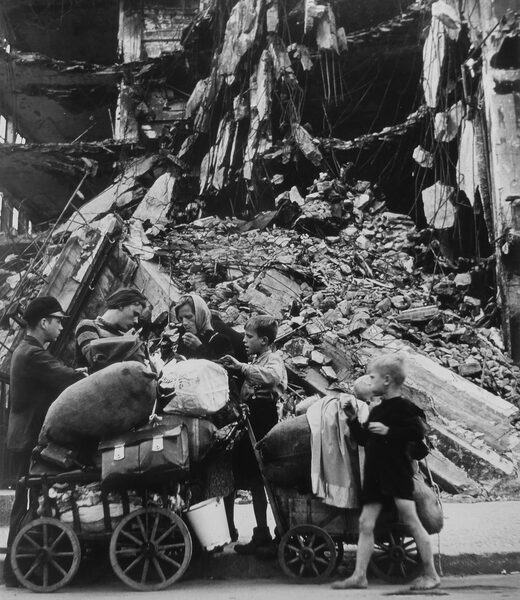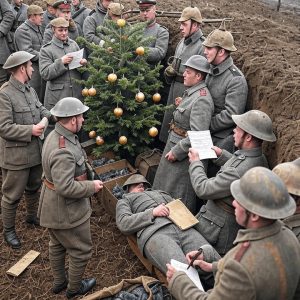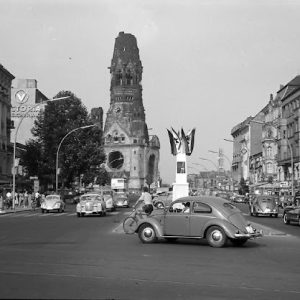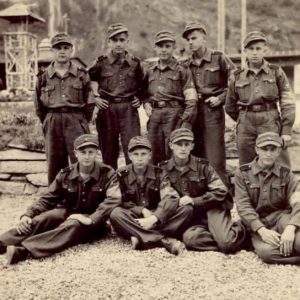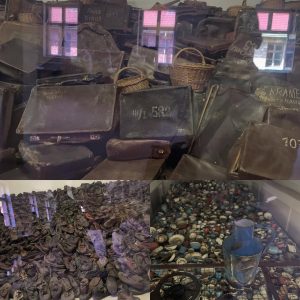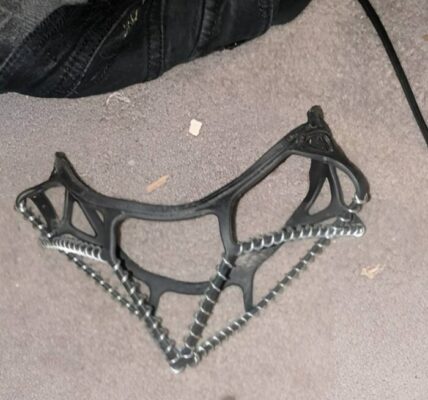Berlin 1945 – A new beginning amidst the rubble: A family on the way into the unknown _de

In the summer of 1945, Berlin lies in ruins. The city, once a symbol of German culture, science, and modernity, is now only a shadow of its former self. Bombing raids have wiped out entire neighborhoods, houses have collapsed, streets are covered in rubble and ruins. Amidst this apocalyptic scene, a family—consisting of women, children, and the elderly—is seen with two handcarts laden with belongings, searching for a new beginning.

This scene represents the fate of millions of Germans after the end of World War II. Most of them lost everything: their homes, their jobs, their loved ones, and, last but not least, their hope. Yet despite everything, they fought for survival. They wandered through the devastated streets of Berlin, trying to find food, clothing, and a roof over their heads. Their faces reflected exhaustion, grief, but also determination.
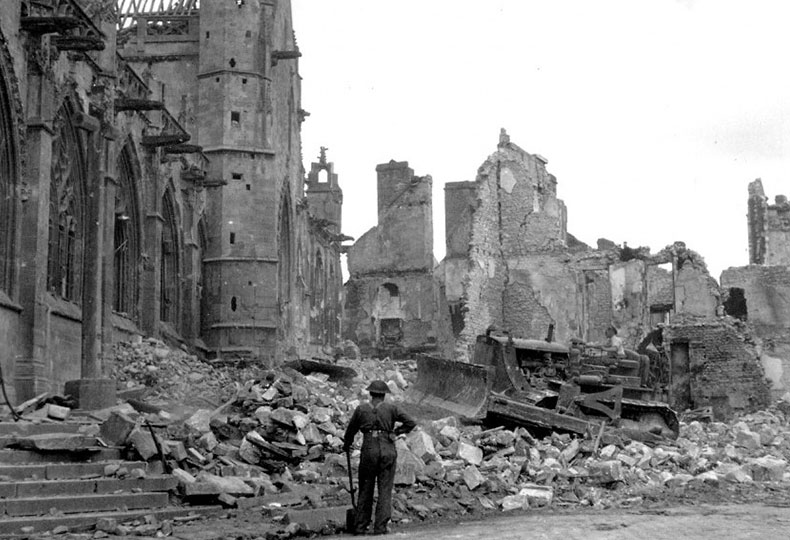
The “Trümmerfrauen” (rubble women), a term that would later become famous, had already begun the arduous work of rebuilding the city stone by stone. It wasn’t an organized effort, but often an act of sheer necessity. Many of these women were single, widowed, or their husbands were still prisoners of war. The children helped as best they could, carrying buckets, sorting bricks, collecting firewood, or standing in lines for hours just to get a piece of bread or some water.

In the photographed scene, we clearly see how improvised life has become. Children run barefoot across the asphalt, women wear headscarves and have loaded what little they have left onto carts. It’s a picture of loss—but also one of strength. Each of these people, in their own way, demonstrates resistance to complete surrender.
After the war, the city of Berlin was divided into four sectors: American, British, French, and Soviet. Tensions between the Allies were already evident, and reconstruction took place under difficult political conditions. Nevertheless, everyday life remained the most important thing: food, water, clothing, and heating for the coming winter. Everything was scarce; everything had to be organized, bartered, or made.
Many families, like the one in the photo, were returning from evacuation or flight—or simply trying to find a place to stay. Train stations were overcrowded, emergency shelters overflowing. Old apartments, even those partially destroyed, were made usable again with blankets and tarpaulins. Every room, every corner was needed.
The children, often without school or medical care, played in the ruins, crafted toys from scrap metal, or helped their parents with their daily chores. Their childhoods were marked by deprivation – and yet, during this time, many of them developed a special form of creativity and survival spirit that would shape their lives.
This photo reminds us today of the immeasurable consequences of the war, but also of the courage and dignity of ordinary people who carried on even when everything seemed lost. It shows us that reconstruction is not only achieved through governments and plans, but above all through the will and strength of those who survived day after day—with their bare hands and unbroken hope.
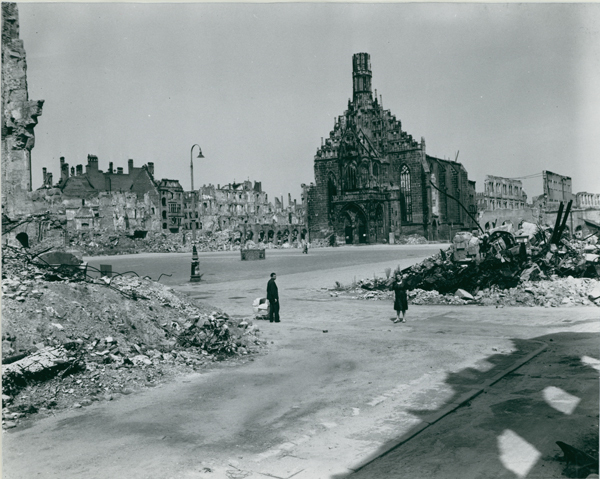
In a world where we are once again confronted with war, flight, and destruction, this image reminds us not to forget what people are capable of—both for better and for worse. And at the same time, it gives us hope: For even from the deepest ruins, a new beginning can emerge.
